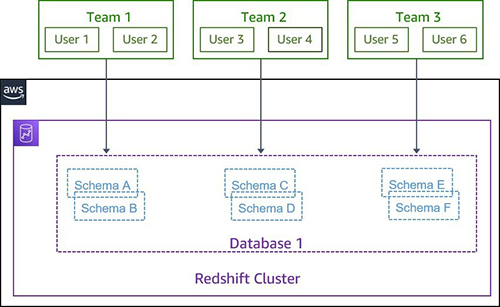AWS Big Data Blog
Category: AWS Cloud Financial Management
Perform per-project cost allocation in Amazon SageMaker Unified Studio
Amazon SageMaker Unified Studio enables per-project cost allocation through resource tagging, allowing organizations to track and manage costs across different projects and domains effectively. This post demonstrates how to implement cost tracking using AWS Billing and Cost Management tools, including Cost Explorer and Data Exports, to help finance and business analysts follow FinOps best practices for controlling cloud infrastructure costs.
How to track Amazon OpenSearch Service domain-level cost
Amazon OpenSearch Service Pricing is based on three dimensions: instances, storage, and data transfer. Storage pricing depends on the chosen storage type and also the storage tier. Visibility into domain-level charges enables accurate budgeting, efficient resource allocation, fair cost attribution across projects, and overall cost transparency. In this post, we show you how to view the OpenSearch Service domain-level cost using AWS Cost Explorer.
Monitor and optimize cost on AWS Glue for Apache Spark
AWS Glue is a serverless data integration service that makes it simple to discover, prepare, and combine data for analytics, machine learning (ML), and application development. You can use AWS Glue to create, run, and monitor data integration and ETL (extract, transform, and load) pipelines and catalog your assets across multiple data stores. One of […]
Manage your data warehouse cost allocations with Amazon Redshift Serverless tagging
Amazon Redshift Serverless makes it simple to run and scale analytics without having to manage your data warehouse infrastructure. Developers, data scientists, and analysts can work across databases, data warehouses, and data lakes to build reporting and dashboarding applications, perform real-time analytics, share and collaborate on data, and even build and train machine learning (ML) […]
How Strategic Blue uses Amazon QuickSight and AWS Cost and Usage Reports to help their customers save millions
This is a guest post co-written with Frank Contrepois from Strategic Blue. For over 10 years, Strategic Blue has helped organizations unlock the most value from the cloud by enabling their customers to purchase non-standard commitments. By taking a commodity trading approach to purchasing from AWS, Strategic Blue helps customers purchase commitments for varying lengths […]
Analyze Amazon S3 storage costs using AWS Cost and Usage Reports, Amazon S3 Inventory, and Amazon Athena
Since its launch in 2006, Amazon Simple Storage Service (Amazon S3) has experienced major growth, supporting multiple use cases such as hosting websites, creating data lakes, serving as object storage for consumer applications, storing logs, and archiving data. As the application portfolio grows, customers tend to store data from multiple application and different business functions […]
How to attribute Amazon Redshift costs to your end-users
Amazon Redshift is a fast, fully managed cloud data warehouse that makes it simple and cost-effective to analyze all your data using standard SQL and your existing business intelligence (BI) tools. In this two-part series, we discuss how to attribute Amazon Redshift costs at the user and group level. When using Amazon Redshift, you can […]






